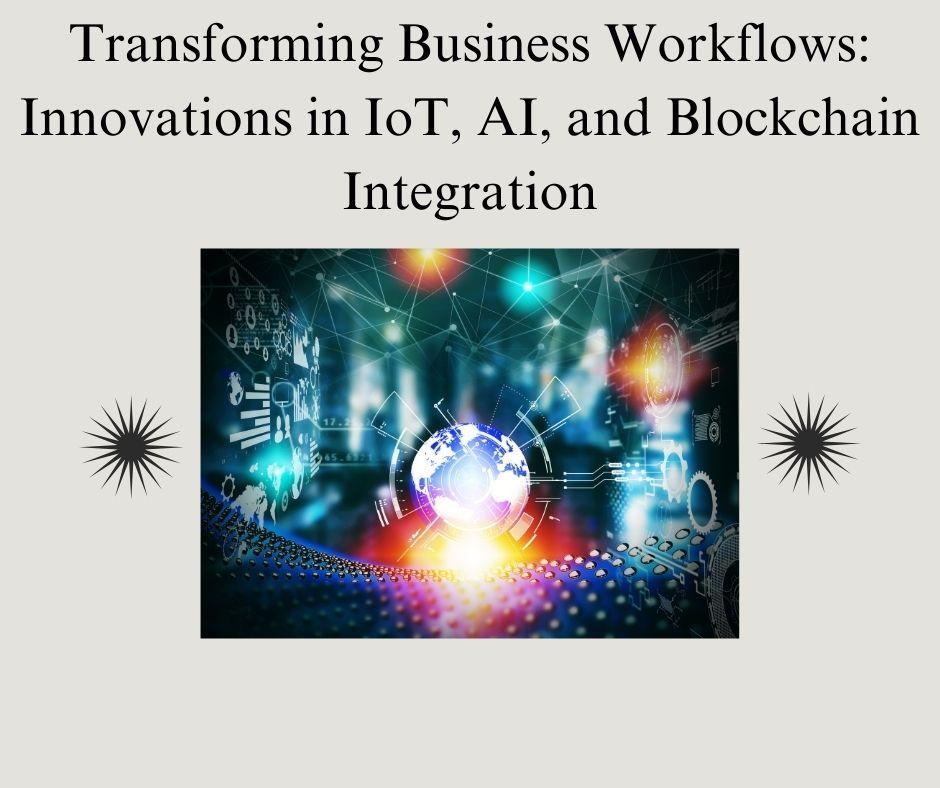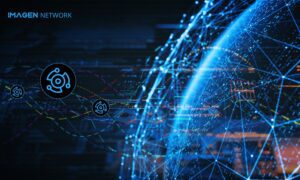The convergence of emerging technologies has paved the way for unprecedented advancements in business workflows. Ranadheer Suram, whose expertise spans technological integration and process optimization, delves into the transformative potential of Internet of Things (IoT), Artificial Intelligence (AI), and blockchain in modern operations. This article highlights these innovations, revealing their role in shaping secure, efficient, and adaptive workflows.
From Automation to Integration
Traditional workflow systems, while foundational, often fell short in flexibility and scalability. Emerging technologies, however, bring a new era of integration. IoT sensors enable real-time data collection across multiple touchpoints, eliminating manual interventions and providing granular insights into operations. Automated adjustments based on sensor data facilitate seamless process continuity, minimizing delays and errors.
These advancements ensure not only efficiency but also adaptability in dynamic business environments. By transitioning from sequential processes to parallel, real-time data handling, IoT empowers organizations to make timely decisions and respond to market demands.
AI-Driven Efficiency
Artificial Intelligence (AI) and Machine Learning (ML) have revolutionized workflow optimization by leveraging predictive analytics to anticipate bottlenecks and resource needs. AI-powered process mining tools analyze complex operations, identifying inefficiencies and enabling organizations to streamline task distribution. By redesigning workflows based on data-driven insights, these technologies enhance productivity, reduce operational costs, and drive more agile decision-making processes.
AI-powered orchestration tools bring a new level of sophistication to workflow management by dynamically adjusting parameters in real time. These tools optimize resource allocation based on current demands, forecasted needs, and workload priorities, minimizing process variability and delays. Their adaptability enhances overall operational efficiency, enabling businesses to maintain seamless performance even in dynamic environments. By leveraging AI’s predictive capabilities, these orchestration tools empower organizations to streamline operations, achieve scalability, and stay competitive in an ever-evolving business landscape.
Blockchain for Transparency and Security
Blockchain technology has become a fundamental tool for secure and transparent workflows. Its immutable ledger fosters trust and accountability, especially in multi-party operations. The integration of smart contracts enables organizations to automate conditional processes with accuracy, eliminating manual intervention and reducing administrative burdens. By ensuring data integrity and streamlining operations, blockchain empowers businesses to achieve greater efficiency and reliability in their processes.
Moreover, blockchain’s hyper-automation capabilities enable a higher degree of process automation without compromising security. This technology’s potential to create tamper-proof records enhances regulatory compliance and operational transparency, particularly in sectors with stringent data protection requirements.
The Role of Cloud-Native Architecture
Cloud-native frameworks further amplify the impact of IoT, AI, and blockchain. These architectures support scalable, containerized applications, allowing businesses to adjust resources dynamically based on workload demands. Automated deployment pipelines and service orchestration strategies ensure seamless integration with existing systems while maintaining the flexibility to accommodate future growth.
Incorporating robust security measures, such as encrypted data transmission and service identity management, these frameworks address challenges in distributed environments. Continuous monitoring and automated incident response ensure that security enhancements complement, rather than hinder, operational agility.
Overcoming Challenges in Implementation
While the benefits are compelling, implementing these technologies is not without challenges. Technical complexities in system integration, latency management, and resource allocation require meticulous planning. Organizational resistance to change also necessitates comprehensive training and user-centric deployment strategies.
However, with a structured approach that combines technical performance goals with change management, businesses can overcome these barriers. Iterative testing and feedback loops are key to ensuring successful technology adoption.
A Glimpse into the Future
The future of workflow optimization lies in hybrid environments that combine the strengths of edge and cloud computing. Such ecosystems dynamically adapt to workload variations, enabling real-time responsiveness and cost efficiency. Advancements in AI and blockchain will further push the boundaries of automation, delivering innovative solutions for workflow management.
The integration of these technologies marks a paradigm shift, setting new benchmarks for efficiency, security, and scalability. As businesses continue to explore their potential, they are poised to redefine operational excellence in the digital age.
In conclusion, Ranadheer Suram’s insights underscore the transformative impact of IoT, AI, and blockchain in modern workflows. By leveraging these innovations, organizations can unlock new levels of productivity and resilience, shaping a future of unparalleled operational efficiency.

































